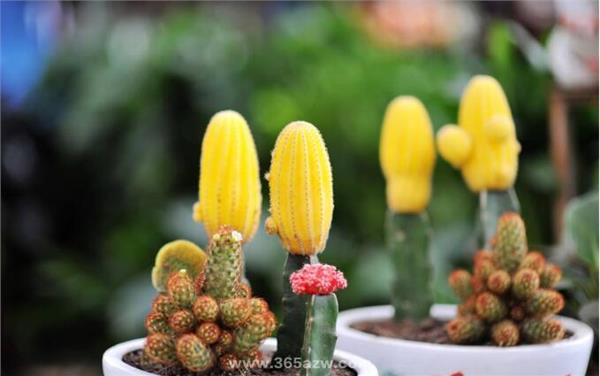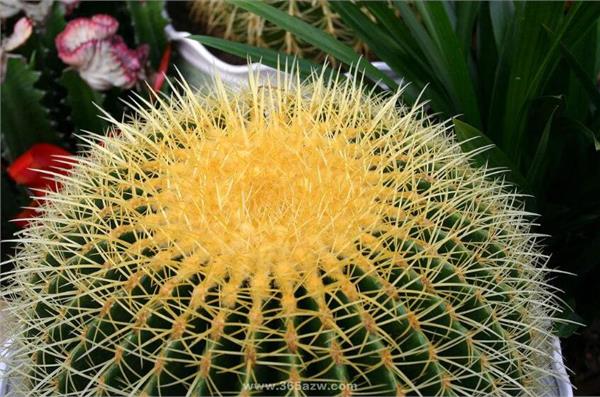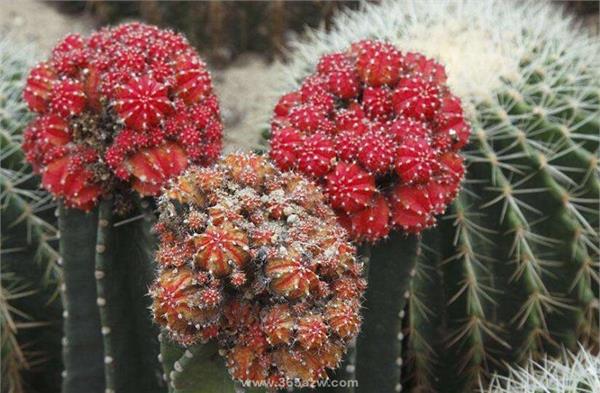Is the cactus ball anti-radiation? how to raise the cactus?
Cactus must be no stranger, can be seen everywhere around us, many people raise cactus because it can protect against radiation, so, can cactus really protect against radiation? How on earth do you raise cactus? Let's take a look.

In life and work, cactus has the role of absorbing electromagnetic radiation. The cactus ball opens its breathing holes at night, releasing large amounts of oxygen while absorbing carbon dioxide. Placing a cactus indoors or in the office can indeed purify the air, release oxygen, increase air humidity, reduce the impact of radiation on poor health, and protect human health.
From a scientific point of view, no plant can protect against radiation. Because there are only two ways to prevent radiation, one is to hinder, and the other is to deflect the radiation with a strong electromagnetic field. While the cactus is placed next to the computer but does not have these two functions, it is just its own tolerance to radiation is relatively strong. The reason why the cactus is anti-radiation is that the cactus can provide people with a good working environment by purifying the air and releasing oxygen, so as to reduce the harm of radiation to the human body.
Planting a cactus only absorbs solar ultraviolet radiation, and it grows in desert areas where solar ultraviolet radiation is serious, so it has a certain nature of anti-ultraviolet radiation in order to adapt to dry wells. The breathing hole of the cactus opens at night and can release a large amount of oxygen while absorbing carbon dioxide. It increases the concentration of negative ions in the indoor air, so the plant is placed next to electrical appliances in the home or office.

How to raise cactus
1. Temperature: the cactus likes high temperature and dry environment. In winter, the room temperature should be kept above 20 ℃ during the day and not less than 10 ℃ at night. Too low temperature can easily cause root rot.
2. Lighting: cactus requires plenty of sunshine, but it can not be exposed to strong light in summer and needs proper shade. Indoor cultivation, can be illuminated by light to make it grow healthily.
3. Potted soil: potted cactus soil requires drainage, good permeability, calcareous sandy soil (or sandy loam), 2 parts of loam, 2 parts of rotten leaf soil, 3 parts of coarse sand, plus 1 part of limestone or old lime wall debris discarded when old buildings are demolished, or 2 parts of loam, 2 parts of coarse sand, 1 part of broken brick, rotten leaf soil and 1 part of old lime wall debris. During cultivation, a small amount of broken masonry and tiles should be padded at the bottom of the basin to smooth drainage.
4. Planting: planting the upper pot had better be carried out in early spring, and the flowerpot should not be too large, so that it can hold the sphere and have a little gap. The flowerpot is too large to be absorbed after pouring enough water, and the air in the pot is impassable, which is easy to make the root rot. A few taproot species and bird feather jade, giant elephant balls, etc., require a deeper tube basin. Silver hair ball, offspring ball and other species with shallow roots can be used in shallow ordinary flowerpots.
5, the method of changing the basin: potted cactus, it is appropriate to use a strong breathable tile basin, the bottom of the basin pad broken brick particles as a drainage layer. The palm root plexus is small, the planting basin should not be too large, and the basin diameter should be similar to the plant diameter, beautiful and harmonious. When changing the basin, part of the old root should be cut off. Dry 4Mel for 5 days and then plant in the pot, the planting should not be too deep, and the root neck of the sphere should be flat with the soil surface. In order to avoid causing rotten roots, the newly planted cactus should not be watered, just spray 2Mel three times a day, water a small amount after half a month, and gradually increase watering after a month when the new roots grow.

Matters needing attention in cactus culture
1. Cactus requires plenty of sunshine, but it can not be exposed to strong light in summer and needs proper shade. Indoor cultivation, can be illuminated by light to make it grow healthily.
2, potted cactus, it is appropriate to use a highly breathable tile basin with broken bricks at the bottom as a drainage layer. The palm root plexus is small, the planting basin should not be too large, and the basin diameter should be similar to the plant diameter, beautiful and harmonious. When changing the basin, cut off some of the old roots. Dry for 5 days and then plant in the pot, the planting should not be too deep, it is appropriate to keep the root neck of the sphere flat with the soil surface.
3. The time of watering should be early morning in summer, sunny afternoon in winter, morning and evening in spring and autumn. In general, do not sprinkle water from the top, or there will be ugly spots on the sphere over a long period of time. In general, watering must be fully watered, so the soil must be often loosened to make the basin soil easily and evenly absorb enough water.
4. Prevention of diseases and insect pests: the diseases and insect pests of cactus are mainly anthracnose, canker, shell insects and whitefly, mainly to control moisture, timely ventilation and prevention. Carbendazim has a certain effect on anthrax, streptomycin is more effective for canker, but mainly prevention.
5. Cactus is a flower with thorns. If you change the pot and transplant, you should pay attention to wearing gloves to avoid stabbing.
Related
- Wuhan Hospital Iron Tree Blooming Result Was Instantly Frightened by the Gardener Master
- Which variety of camellia is the most fragrant and best? Which one do you like best?
- What is the small blue coat, the breeding methods and matters needing attention of the succulent plant
- Dormancy time and maintenance management of succulent plants during dormancy
- Minas succulent how to raise, Minas succulent plant pictures
- What are the varieties of winter succulent plants
- How to raise succulent plants in twelve rolls? let's take a look at some experience of breeding twelve rolls.
- Attention should be paid to water control for succulent plants during dormant period (winter and summer)
- Watering experience of twelve rolls of succulent plants
- Techniques for fertilizing succulent plants. An article will let you know how to fertilize succulent plants.



